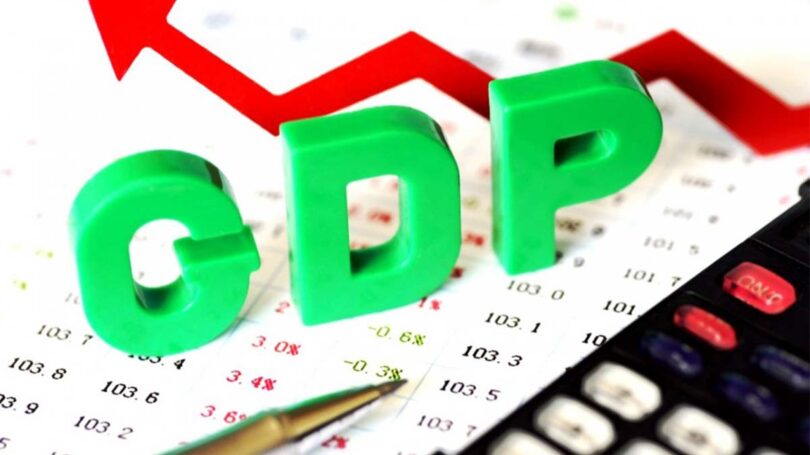The lower non-oil sector growth rate recorded in the third quarter of 2023 highlights some shortcomings in the economic diversification efforts of the Federal Government in Nigeria.
The latest GDP report by the National Bureau of Statistics (NBS) for Q3 2023 shows that the non-oil sector grew at a lower rate of 2.75% in real terms, slightly lower when compared yearly and quarterly.
This sector, which is a major contributor to the Nigerian economy, is driven by sub-sectors, such as Information and Communication (Telecommunication); Financial and Insurance (Financial Institutions); Agriculture (Crop production); Trade; Construction; and Real Estate.
The president’s twin policies of fuel subsidy removal and unification of the naira have fueled an already raging inflation affecting the purchasing power of Nigerians.
Most businesses in the non-oil sector have experienced lower profits due to exchange range losses as they also struggle to meet sales targets amidst waning consumer confidence.
Latest data from Nigeria’s purchasers managers index also slowed for the first time this year in October as businesses complained of tougher macroeconomic conditions.
Despite the huge amount of intervention funds targeted at agricultural activities in the country, the sector still struggles due to issues like insecurity, flooding, and poor infrastructure, among others.
Crop Production, Forestry, Fishing, and Livestock Production are the four sub-activities that make up the Agricultural Sector.
Nominal sector growth in Q3 2023 was 11.06% annually, representing a decline of 9.02% points compared to the corresponding quarter of 2022.
In comparison to the growth rate of 11.42% in the previous quarter, a decline of 0.37% points was observed. Crop Production continued to be the sector’s primary driver.
This is apparent, given that it constituted 92.24% of the sector’s total nominal value during the third quarter of 2023.
The quarterly growth rate during Q3 2023 was 45.59%. The agricultural sector accounted for 26.36% of the nominal GDP during Q3 2023.
The observed rate in this period was comparatively lower than that of the third quarter of 2022 and higher than that of the second quarter of 2023, which stood at 27.55% and 21.07%, respectively.
Also, the agricultural sector experienced year-on-year growth of 1.30% in real terms. This represents a decline of 0.04% points compared to the corresponding period in 2022 and a reduction of 0.20% points from the previous quarter, which recorded a growth rate of 1.50%. It experienced a quarterly growth rate of 39.74%.
In real terms, the sector’s contribution to the overall GDP in the third quarter of 2023 was 29.31%. This figure is lower than the contribution of 29.67% in the third quarter of 2022 and higher than the 23.01% contribution in the second quarter of 2023.
Trade in the country has been significantly affected by rising inflation and the accompanying low purchasing power of many Nigerians amid rising poverty levels.
During Q3 2023, trade experienced a nominal year-on-year growth rate of 3.10%. This signifies a reduction of 10.07% in comparison to the growth rate of 13.17% observed in the same quarter of 2022 and a decrease of 0.25% in comparison to the growth rate of 3.35% in the previous quarter.
The growth rate from one quarter to the next was 0.71%. In the third quarter of 2023, trade contributed 11.06% of nominal GDP, down from 12.45% in the same quarter the year before and 12.79% in the quarter before.
In real terms, trade experienced year-on-year growth of 1.53% during Q3 2023. This figure was 3.56% lower than the growth rate documented in the corresponding period of the previous year at 5.08%, and 0.89% lower than the growth rate of 2.41% in the previous quarter. -0.74% was the growth from one quarter to the next.
Comparatively, the growth observed in the second quarter of 2023, which stood at 4.97%, was comparatively slower.
Trade accounted for 15.19 per cent of GDP, which was a decrease from the 15.35 per cent it contributed in the prior year and the 16.80 per cent it contributed in Q2 2023.
Another sub-sector hit by the rising inflation and the fuel subsidy removal policy of the currency administration is transportation and storage.
This subsector consists of the following six activities: road transport, rail transport and pipelines, water transport, air transport, transport services and post and courier services.
Comparatively, the sector experienced a decline of -28.57% in nominal terms during Q3 2023. This rate was greater than the -44.16% observed in the previous quarter but lower than the 39.64% documented for the corresponding quarter of 2022.
The growth from one quarter to the next was 0.33%. As a percentage of Nominal GDP, transport activities accounted for 1.16% in Q3 2023, a decline from the corresponding period of 2022, where they contributed 1.89%, and below the second quarter of 2023, where they contributed 1.35%.
The sub-sector experienced a decline of -35.85% in real terms of growth during Q3 2023. The rate exhibits a decline of 77.44% in comparison to the corresponding quarter of the prior year, while it surges by 14.79% in contrast to the quarter before it.
The quarterly growth rate was 4.14%. The sector’s real GDP contribution in the third quarter of 2023 was 0.84%, reflecting a decline from the 1.34% recorded in the previous year and a reduction from the 0.89% recorded in the second quarter of 2023.
The World Bank stated in its Africa’s Pulse report for April 2023 that the non-oil sector would be the primary driver of Nigeria’s economy in 2023, as oil production was anticipated to remain subdued due to several factors.
It added that services, trade, manufacturing, construction, and agriculture will continue to drive growth.
According to the most recent Purchasing Managers’ Index (PMI) from Stanbic IBTC Bank Nigeria, business activity in Nigeria’s private sector shrank in October.







